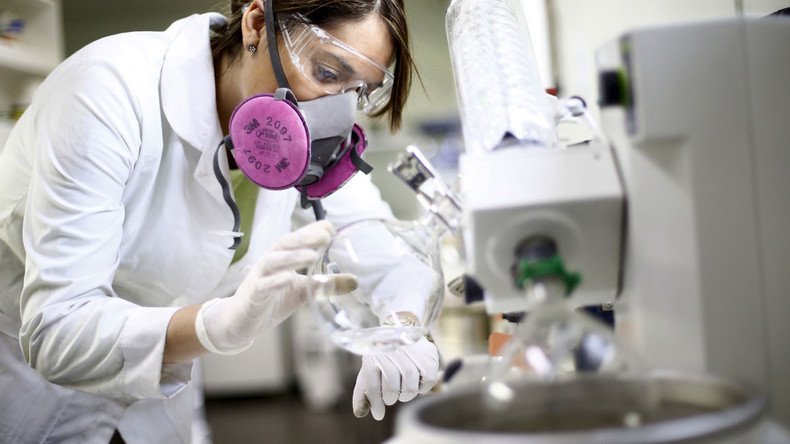Zika breakthrough: Human protein connection brings cure step closer

A protein found in humans common in Micronesia and Asia could hold the key to curing Zika. Scientists in Texas have found that the interferon-induced protein 3 (IFITM3) increased the body’s defence against the virus.
Trials on human and mouse cells found that the presence of IFITM3 led to cells swallowing up and quarantining the virus, preventing its spread.
"IFITM3 pretty much keeps Zika virus stuck in no man's land, where it can't do anything to harm us," George Savidis who was involved in the trials told UMass Medical School Communications.
Savidis and a team of scientists from the University of Massachusetts Medical School published their findings on Saturday, eight weeks after receiving their first sample of Zika virus to study.
Almost 300 pregnant women have #Zika in #US, territories – CDC https://t.co/HkDgOL4Fc1pic.twitter.com/EMoXquSrKZ
— RT (@RT_com) May 21, 2016
Senior author of the study, Abraham Brass, said the results show that the “Zika virus has a weakness that we could potentially exploit to prevent or stop infection."
Brass had worked with the IFITM3 protein on earlier research and believed it could assist in the fight against Zika.
The protein, which is rare in people of European descent but common in Asia and Micronesia, plays a critical role in the immune system’s fight against swine flu, with a heightened presence keeping the viral levels low and its absence allowing the virus to spread.
“We just plugged Zika virus into our system and immediately began testing it,” Brass told UMass. “What might have taken many months or longer to build, we were able to turn around in just several weeks.”
#Zika virus may be transmitted by oral sex & kissing, doctors warn https://t.co/I1wmtEhoXH
— RT (@RT_com) June 3, 2016
The team found that when the protein was low Zika could more readily infiltrate into the cell interior and cause infection. Conversely, when IFITM3 is present in high levels it prevents Zika reaching the interior of cells and blocks infection.
#Zika blocked by human protein IFITM3! New paper by Savidis et al. from Brass lab https://t.co/bMpXZEZcGG@CellReports
— Abraham Brass (@AbrahamBrass) June 3, 2016
Brass and his team will have to next test these findings on mice that are IFITM3-deficient to see whether these animals are more susceptible to the effects of Zika virus infection.
“Given our recent results with Zika virus, it’s now even more important that we work to find out how IFITM3 is blocking these viruses, and use that knowledge to prevent and treat infections,” Brass said.
So far, a total of 544 Zika cases have been reported in the US while in US territories, and particularly Puerto Rico, there have been a total of 836 cases reported. A total of 300 pregnant women in the US and its territories have contracted the virus according to the CDC.
Tourists warned to ‘think twice’ about visiting Florida #DisneyWorld over #Zika virus risk https://t.co/MF9qtI5JJ7
— RT (@RT_com) May 29, 2016
There is currently no vaccine or medicine for treating the virus, and many of those infected do not display symptoms.
Zika has been detected in at least 58 countries and territories around the world, with South America reporting the most active transmissions. Pregnant women can pass the virus to the fetus, which can result in serious birth defects including an underdeveloped skull and brain.












